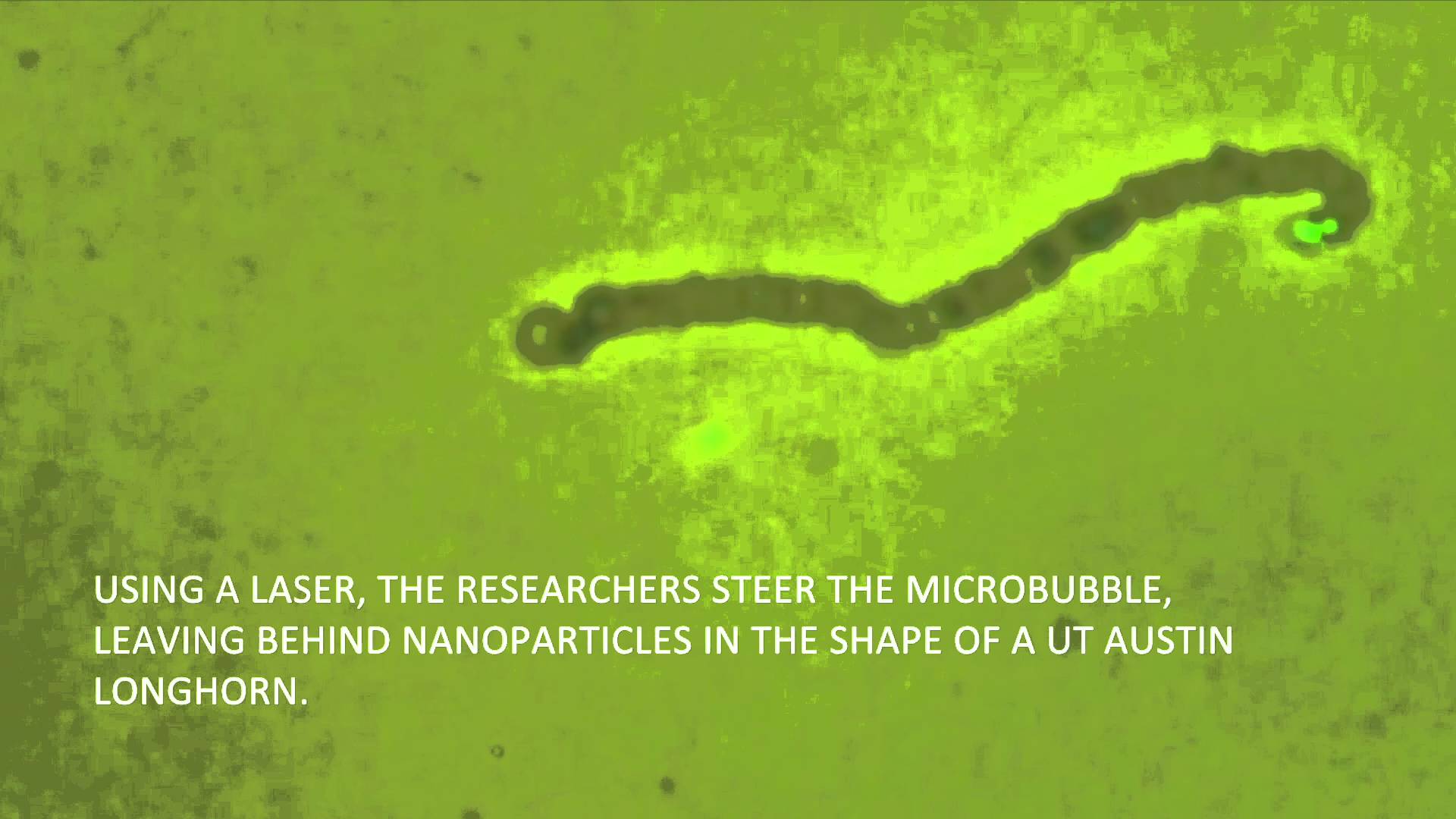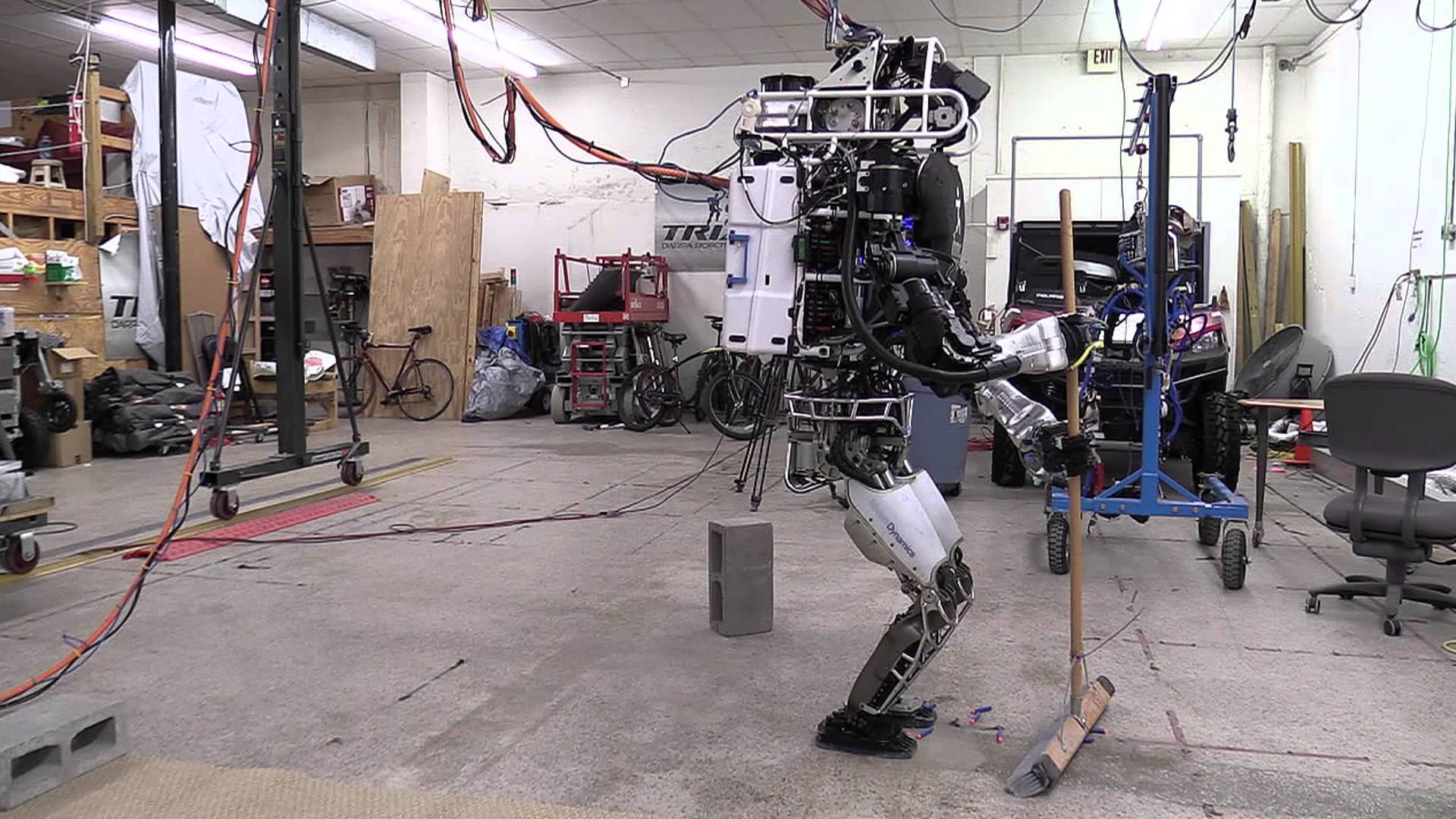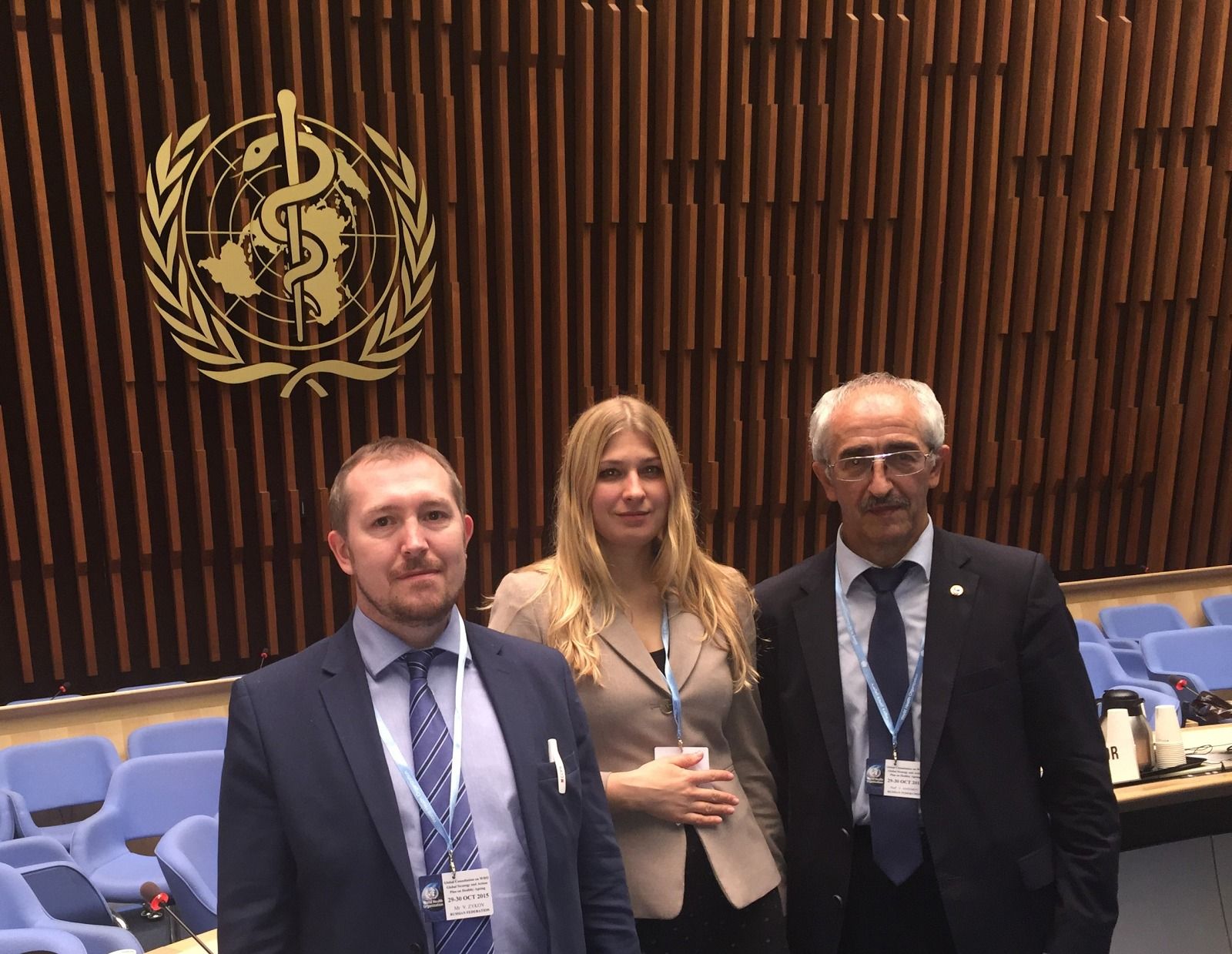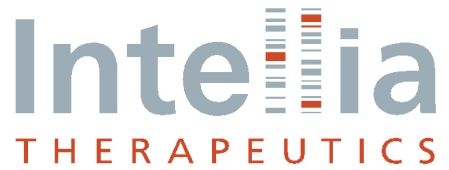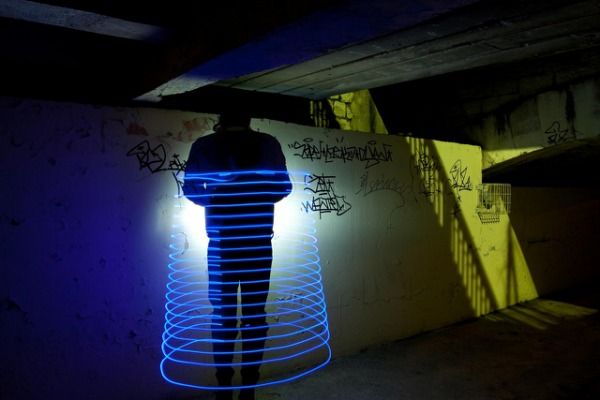Moon “village”, a successor to International Space Station, would be series of structures made by robots and 3D printers that use moon dust as building material.
Allows for more easily building tiny machines, biomedical sensors, optical computers, solar panels, and other devices — no complex clean room required; portable version planned.
Illustration of the bubble-pen pattern-writing process using an optically controlled microbubble on a plasmonic substrate. The small blue spheres are colloidal nanoparticles. (credit: Linhan Lin et al./Nano Letters)
Researchers in the Cockrell School of Engineering at The University of Texas at Austin have created “bubble-pen lithography” — a device and technique to quickly, gently, and precisely use microbubbles to “write” using gold, silicon and other nanoparticles between 1 and 100 nanometers in size as “ink” on a surface.
The new technology is aimed at allowing researchers to more easily build tiny machines, biomedical sensors, optical computers, solar panels, and other devices.
Modest progress at the WHO international consultation on aging.
Our parent organization the ILA has been busy and here is an article about the latest news from the World Health Organization meeting in Geneva to discuss aging research. There are some positive changes being made and well done to everyone who helped out on this project.
http://majormouse.org/?q=node/164
As we continue growing as a technological society at an exponential rate, what will the fate of money be as a result? — Francesco Amati for Serious Wonder.
Excellent news; Intellia to continue their focus of leveraging the CRISPR/Cas9 across a variety of immune cells, such as natural killer cells and T-cells. From my own experiences with T-cells and other blood disorders; this is a big deal and one that I personally excited to see what potential cures and improvements come about.
CAMBRIDGE, Mass.–(BUSINESS WIRE)–Intellia Therapeutics, a leading gene-editing company, has launched a new division, eXtellia Therapeutics, with the intent of focusing resources and research on ex vivo applications of the novel technology, CRISPR/Cas9. As in vivo and ex vivo programs require different competencies in research, manufacturing and commercialization, eXtellia Therapeutics is being launched to accelerate Intellia’s efforts in areas of significant unmet medical need – immuno-oncology, autoimmune and inflammatory diseases – using an ex vivo approach. Intellia will continue its in vivo programs and strategy through a dedicated scientific team.
“We are excited to announce the establishment of eXtellia, increasing our footprint in ex vivo gene editing for oncology and autoimmune diseases,” said Nessan Bermingham, Ph.D., Chief Executive Officer and Founder, Intellia Therapeutics. “eXtellia enables us to bring together the required capabilities needed to take the CRISPR/Cas9 technology beyond Intellia’s emerging in vivo, HSC and CAR-T efforts. We believe eXtellia further positions us to maximize the CRISPR/ Cas9 opportunity to address severe unmet medical needs for patients.”
I truly love teleporting.
Teleporting the memories of an organism is possible, say scientists working on making the science-fiction phenomena come to life. They have come up with a theory that uses “quantum superposition” to place a microorganism in two places at once.
The Chinese physicists have drawn up a plan to use electromechanical oscillators and superconducting circuits to “teleport” the microbe. Its quantum state will be moved elsewhere, resulting in a big first step toward human teleportation.
Tongcang Li, co-author of the study from Purdue University, said: “We propose a straightforward method to put a microorganism in two places at the same time, and provide a scheme to teleport the quantum state of a microorganism.”
The Singularity Controversy, Part I: Lessons Learned and Open Questions: Conclusions from the Battle on the Legitimacy of the Debate
Posted in computing, policy, singularity | Leave a Comment on The Singularity Controversy, Part I: Lessons Learned and Open Questions: Conclusions from the Battle on the Legitimacy of the Debate
Friends,
When Singularity Hypotheses was published, the technological singularity was (barely) a fringe academic topic. Three years later, and the singularity is in the headlines of every magazine and tabloid.
Yet the subject became even more controversial, with some very polarizing views confusing the public.
We’ve decided to help policy makers understand the technological singularity and publish this report. It is intended to clarify the debate, refute common misconceptions, and highlight the open questions.
Please comment below with your views!
Thanks, Amnon.
Sapience Project for Study of Disruptive and Intelligent Computing.
This is excellent news for Epilepsy.
Epilepsy, a disorder in which nerve cell activity in the brain is disturbed, causing seizures, is the fourth most common neurological problem, following only migraine, stroke and Alzheimer’s. There is no cure for epilepsy, but there are a variety of treatment options. The disease is estimated to affect 2.2 million people in the U.S., with 150,000 people developing the condition each year.
Personalized medicine Scientists at AES discussed how new technologies, such as gene editing using CRISPR-Cas9, and next-generation sequencing, are empowering them to take a new crack at the human genome and find new ways to diagnose and treat epilepsy.
“Recent advances in DNA sequencing and genomic technologies has facilitated a flood of discoveries in identifying genetic causes of epilepsy. Where we’ve been most successful is in the epileptic encephalopathies (EE),” lead author of one of the studies presented, Candace Myers, a senior at the University of Washington, said in a press conference.

